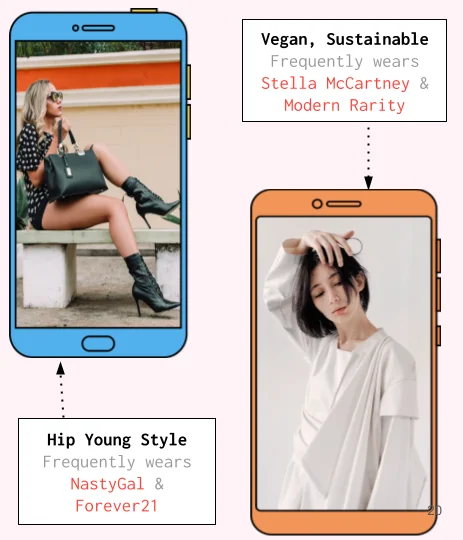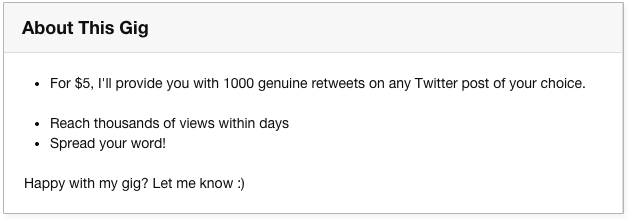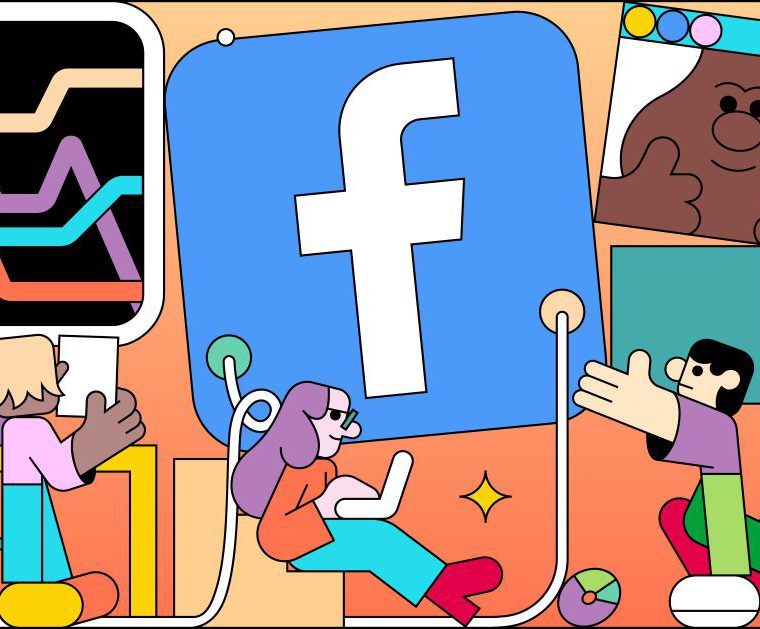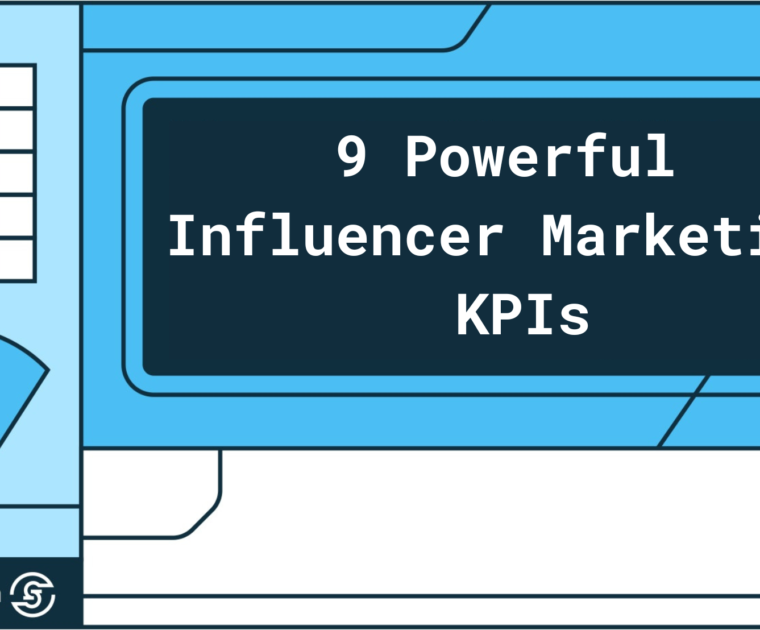We’ll be the first to admit it: there are a ton of ways and some really smart techniques out there that will allow social media users and content creators to inflate their numbers. So, it can be hard for brands that are still having trouble finding the right influencers for their campaigns. In this post we’ll review the criteria you need to look at when selecting influencers that will help you achieve the best ROI.
If you’ve been following The Shelf Blog, you’ve probably noticed that we are BIG on metrics – from using actual data to separate the influencers from the fakers to making sure the campaigns we run for our clients actually deliver measurable returns (ROI) beyond earned media value. You know… stuff like clicks and follows, and shares…
In the years ten years since The Shelf launched, the concept of vanity metrics has ROCKED the influencer marketing space. Big brands screaming about fake followers. Social media platforms deleting social accounts by the millions. Elon Musk buying Twitter for revenge (just a best guess).
Over the years, we’ve read plenty of headlines that pronounced the death of influencer marketing. But time and again, the industry has transitioned through these types of sky-is-falling growing pangs only to double or triple in size.
The truth is vanity metrics (like inflated follower numbers and tons of impressions that don’t seem to tie to any engagement) negatively affect both creators and brands. So, in this update of one of our epic pillar posts, I’m going to show you exactly how to go about finding bloggers and influencers for campaigns.
How to Find the Right Influencers for Your Campaign… without the Fancy Software
“Let’s say you have 10,000 fans and 9,000 of them buy ten copies of your book because you tweeted about it. Well then that sounds really valuable. On the other hand, let’s say you have 10,000 fans because you bought them on some weird website when you were trying to be cool. Then you post something and it gets zero engagement, because nobody gives a rat’s ass. I would say that’s less valuable, wouldn’t you?”
That #instantclassic quote from Josh St. Aubin circa 2014 dives into real examples of turbo-influencers who get overlooked by popularity-focused marketers because their follower counts aren’t skyrocketing. The entire post is a really nice read for anyone interested in the topic.
Vanity metrics sort of suck because they lead marketers to make bad decisions and they’ve turned influencer marketing into more of a gamble. Brands wind up partnering with influencers who don’t (and can’t) deliver at all. And in many cases, these marketers overlook actual influencers who could really launch their brands into orbit because those influencers refuse to play along with the vanity-metric-game.
Since vanity metrics are so misleading, the process for vetting your potential influencers is one that should not be taken lightly. Marketers who put a little more effort into making sure they choose the right ones to work with will see huge long-term benefits – ROI and otherwise.
I’ll now walk through a stripped-down version of our seven step process, which I encourage marketers to use when vetting influencers. This process takes away a pretty hefty amount of risk when it comes to working with the right influencers and seeing real results.
1. Use Creative Demographic Matching
Before you even start looking at metrics, the most important thing to consider is whether or not the influencer is a perfect match for your brand and demographic. You need to be crystal clear on who your specific audience is because it might not always be who you think.
For example, many companies come to us with incredibly specific influencer targets. Like, “I’m selling underwear, therefore I need to use your platform to find bloggers who talk mainly about underwear.”
Here’s what you have to get: The fact that they’re selling underwear is irrelevant. What’s more important is what TYPE of person would wear their very specific style of underwear.
Is it casual and comfy? Maybe they should target bloggers with a more laid back style. We often drop an example similar to this one in our decks to provide a bit of context.

A Tale of Two Influencers
Let’s say the influencers on the left have lots of similarities. They’re both in their 20s. They both talk about fashion. And they both appeal to women in their late teens to early 30s. So, it’s their distinctive values that would ultimately shape which brands they work with and the kinds of messaging that would resonate with their followers.
One of our all-time favorite examples of creative targeting was a campaign run by HP. They were selling tablets and they really wanted to highlight the photography features. Instead of running straight to tech bloggers (as one would expect for an HP Tablet campaign), they partnered up with fashion bloggers.
Why?
Evidently HP has some marketing geniuses working there! They were smart enough to see that if they partnered up with tech bloggers, their tablet would get lost in a sea of other tech products.
HP Tablets created the perfect recipe for their blogger campaign by partnering up with fashion bloggers:
1. The bloggers used it to take their blog photos.
2. They talked about how great it was for taking those photos.
3. They walked through how to use it in order to take great photos.
After all is said and done, you can imagine that their fashionable, selfie-loving audiences would be drooling over this HP Tablet! AND because these bloggers are mainly focused on fashion, their audiences aren’t being inundated with competing tablets.
BIG TAKEAWAY: When targeting, you need to think in terms of what characteristics define your audience. Not what you’re selling.
Let’s run through one more example. Imagine you’re selling healthy homemade meals delivered right to your doorstep. Yes, you’re selling food, but does that mean you need to hunt down food bloggers to work with? No, probably not. Foodies are usually talking about food they make themselves and their readers probably make their own food, too.
Instead, your audience might be busy people – people who don’t have time to cook. Perhaps mommy bloggers who clearly have a lot on their plates (excuse that pun) or even interior design bloggers who can use the service to complement their decor. You could even get more specific by zeroing in on people who are health conscious.
The bottom line is that you need to find the exact fit in terms of targeting. Our platform is super awesome for this sort of thing. Using our search filters, you can get hyper-specific and narrow down to the right influencers.
For example, you can easily search and find maternity bloggers living in New York who wear vintage clothing and shop in high-end stores. You can even narrow down to the posts where they talk about the specific aesthetic, products, or brands you’re searching. That’s pretty powerful when it comes to gauging the success of those posts and finding the right bloggers to work with.
2. Look at Follower Counts… But Be Aware of Who Your Ideal Influencer Actually Is
Through our platform, I’ve noticed a lot of brands come in and use our search engine to set threshold requirements for high follower counts on EACH of the social networks. The brands who are newer to influencer marketing always go sort of nuts with these follower-count filters. They’ll look for influencers who have 40,000 followers on Twitter, Pinterest, Facebook, and Instagram…and many of these people don’t want to compensate anyone for an endorsement.
If this is you, check out this post about why influencers charge for sponsored work and what to expect in terms of pricing.
The problem with setting super high follower requirements on EACH social network is that you pretty much eliminate everyone from your potential list. We’ve seen that most influencers (and I seriously mean MOST) will only focus on one or two social networks max and ignore the rest. If you think about it from their perspective, it makes sense. It’s entirely too painful to keep up with all five or six networks, AND run a successful blog on top of that.
I’m sure that most of you only focus on one or two social networks, too. In those first few years, our company ditched Facebook, Instagram, and Pinterest in favor of just maintaining Twitter and LinkedIn. It was more manageable and that’s where we’ve seen the best return in terms of new customers. Only in recent months have we added Facebook, Instagram and Pinterest to our SMM arsenal. Bloggers and influencers are the same way. They focus on the social networks that will bring them the best returns.
I’ve copied some of our growth-tracking charts to better illustrate this point. Each color represents a social network. In the below example, you’ll see the top two focus on Facebook, the middle two on Instagram, and the bottom one on Pinterest.
Instagram, by far, has the most attention from influencers in the fashion/beauty/lifestyle space, followed by Facebook. There were a select few who really put effort into Pinterest, too. The one that was really lagging behind was actually Twitter.
As much as I’m ragging on vanity metrics, follower counts are obviously important to a certain degree. After all, you want there to be an audience, otherwise what would be the point?
So rather than completely disregarding follower counts, I’d encourage you to keep an open mind about follower count requirements. You might find a blogger whose follower count is significantly lower than what you were originally shooting for, but whose engagement is just off the charts AND a demographic that’s on-point. Just because a blogger is popular doesn’t necessarily mean she can influence purchase decisions for your brand. Arik Hanson explains this beautifully.
3. Do Some Fact Checking
If you’re putting together campaigns on behalf of a large brand, you probably have a decent budget to allocate toward influencers. If that’s the case, you might not need to get into nitty-gritty fact-checking quite as much (time is money, after all). Besides, when you run lots of campaigns, you are probably more concerned with the aggregate results, as opposed to the results of each individual campaign. Yay for large marketing budgets!
On the other hand, if you’re a smaller brand and you have more time than you have money, I’d recommend putting on your best internet-stalking game-face and channeling your inner Nancy Drew. With enough research, you can place very sound bets when it comes to selecting your influencers. It just takes a little more effort from the get-go.
If you’ve already validated the demographic match of an influencer, as well as confirmed that she has enough of a following to warrant consideration, the chances of her working out are pretty high. The last thing you need to deal with is weeding out the false positives, like the influencers who look awesome but might not be as great as they seem due to vanity metrics.
As we reviewed in Post #1 of this series, there are tons of ways to fabricate metrics:
- Buying followers on any social network
- Buying engagement (likes, retweets, comments) on any social network
- Buying YouTube views
- Buying (quality) blog post comments
- Buying website traffic
- Rapidly growing social followings via the follow/unfollow technique.
If you know what to look for though, there’s no reason that you should ever be fooled by one of the above tactics.
4. Detect Fake Followers
Detecting fake followers is actually really easy. You’ll need to go onto an influencer’s social accounts and scroll through their followers. For this, you’ll need to go pretty far down, because no one is buying followers every day. For that reason, bought followers will usually get covered up by the real ones.
Look for blocks of odd profiles because these fake followers will show up as one big group.
Find recognizable signs of fake followers, like Russian descriptions (for some reason a lot of these fake accounts are from Russia) and default egg-profile pictures. Yes, some people really do live in Russia BUT if you come across an influencer with 20% egg-followers, then you’ll know something is up.
Detect the higher-quality fake followers too. Higher quality means that most of the fake followers will have a profile picture and an English description. It’s still pretty easy to detect fakes though because description text (while in English) will usually just be random words that don’t make sense. AND, while most of these higher-quality fake followers actually do have a profile picture, most of them don’t have COVER photos.
Use our platform to review charts that track daily growth of follower counts across the various social networks. If you see abnormally large follower jumps, you should be weary.
Look at the relevance of those followers. If they’re entirely composed of randos (plumbers, Caribbean vacation rentals, uptight businessmen, fake-follower-companies…) then you know that something is amiss. And even if that influencer isn’t doing anything wrong (and they just managed to attract totally irrelevant followers), it’s still pretty safe to assume that your product isn’t going to get a great response from their audience because of the untargeted nature of those followers.
Note: Everyone is going to have SOME random followers. This is unavoidable. What you want to avoid is people who have more than 30% randos.
5. Next, Detect Fake Engagement
Straight-up faking engagement seems a little less common than follower-buying, but it still happens, so there are some things you might want to look out for when you’re evaluating an influencer.
While it’s more difficult to identify fake engagement, it’s not impossible. If you see someone with intensely sporadic engagement on social posts, then that’s probably the best indicator because when someone purchases engagement, they usually have to specify ONE of their posts that will receive the engagement (rather than spreading the engagement out across posts in a more natural way. If someone is getting no engagement for most of their posts, then all of a sudden there is one post with 1,000 retweets, you might want to go ahead and question that.

Take the time to scan through blog comments instead of just looking at comment counts. I’ve seen some bloggers comment like 37 times on their OWN posts without any REAL engagement, so it’s pretty easy to detect.
Check for spammy comments that are totally irrelevant to the conversation. “My cousin makes $10,000 a week by filling out surveys….” Or “Check out my homemade Viagra… ” While most bloggers have put up spam filters to keep out all the random viagra-peddlers, you’ll see some bloggers that have unusually high amounts of spam comments. So again, it’s important to just glance through the comment section for each blogger to make sure that the engagement is legit.
See if hordes of smaller influencers are leaving comments for the sole purpose of sending traffic over to their OWN sites. Many of these comments are half-hearted and irrelevant, like: “Nice post! Here’s a link to my blog: www…” These comments certainly don’t indicate that there’s anything wrong with the original blogger (it’s just something that starts happening once a blog reaches a certain size) but you’ll want to ensure that there’s some genuine engagement too.
6. Suss Out Fake Traffic
Detecting fake traffic is actually kind of difficult. As we discussed in our previous post, some influencers will actually buy traffic, in which case their Google Analytics will back up their claims. I’m happy to report that this tactic is pretty uncommon among the influencer crowd but there are still some tactics you can look out for.
You’ll want to figure out if they’re just presenting the metrics that make their site look the best (and keeping the less attractive ones to themselves). For example, they might be getting tons of traffic, but their bounce rate could be close to 100% and time on site might be seconds instead of minutes. Or they might provide metrics that occurred during a spike in traffic, like when they received press coverage. If they only present stats to you that represent the spike, it’s certainly not painting a realistic picture of what their traffic normally looks like.
You should inquire further about the metrics that really matter, like the average time on site for all non-bounced traffic and how many monthly unique visitors a blogger gets vs. individual page views.
Professional bloggers will be able to provide you with a media kit. According to Allyn Lewis, if you can’t find the media kit on their website, you can just as easily inquire for one. If it’s not clear in the media kit, you should ask whether or not the stats are current. Asking is always helpful, and if someone isn’t forthcoming, then you might want to move on.
Depending on what vertical you are in, you can use traffic estimators like Alexa and Ahrefs. These are great if you’re in the marketing or tech space. These are way less accurate though if you’re looking for fashion, beauty, lifestyle or mommy bloggers.
7. Lastly, Our Secret Weapon
Look back through a blogger’s posts and take note of which brands they’ve worked with in the past. Are any of those brands repeat customers? If there are a few repeat customers, you’ve found the real deal. Get yourself on the books with that blogger!
Our philosophy for that is there’s no reason to reinvent the wheel. There are many marketers who have come before you and paved the way. They have done due diligence on these people and put their money into campaigns with them. And after analyzing the results of these campaigns, they’ve decided to double-dip. This is a great signal for you to use as a guide when assembling your own campaigns.
If you find a brand in your space who’s going nuts with influencer marketing and putting more money into that than their other marketing efforts, then it’s also a good idea to follow them and really analyze their strategy. We see this all the time in the fashion space. There are some brands who have practically written the book on influencer marketing (we have, too – one holiday-themed one on Influencer Strategy and another on setting real goals for influencer campaigns). And they’re putting enormous amounts of energy into their influencer strategy. Old Navy, Target, Lulus, InPink, Ruche, Alice & Olivia…these are all companies that you can learn from if you’re in the fashion space.
To that end, you can use our platform to track all brand mentions made by influencers on any blog or social network. Many people use us to keep tabs on influencers who mention their own product. Some are using our site to track competitors. Some are just studying the brands who have run their influencer marketing in really creative ways.
Conclusion
Here’s the thing about influencer marketing: Its effectiveness is directly related to selecting the right influencers for your brand. Like Goldilocks and the three bears, the influencer needs to be the right match, with the right size following, and have the right demographic of followers.
If you’re careful with who you select, you’ll be blowing past your ROI goals so fast that everyone’s heads will be spinning! Need help with your campaigns? Give us a shout!







